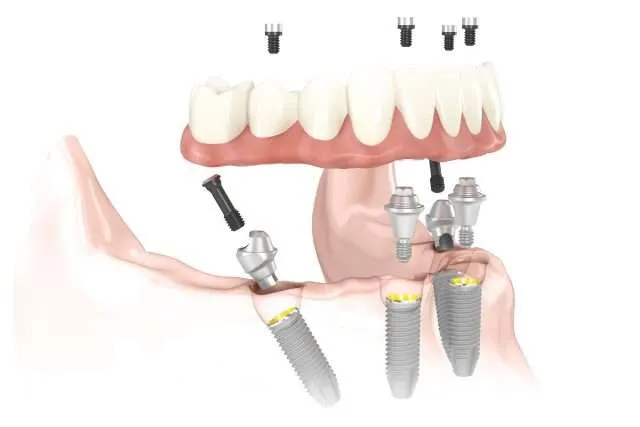All on Four & All on Six

The All on 4 and All on 6 techniques consist of offering people who suffer from total or partial loss of their teeth, a full-arch dental prosthesis fixed on four dental implants, in the case of All on Four, or six dental implants in the case of All on Six on the same day of the intervention.

How is the ‘All on 4’ technique carried out?
The first phases of the All on 4 intervention are the same as in the case of traditional implants. That is, it begins with a series of CBCT and ORAL SCAN studies. We proceed to the exploration and carry out a planning where we will evaluate if the patient is a candidate for implants and offer the necessary technique for it.
An appointment is made to discuss your options and choose the one that best suits you. Photos and models are taken.
Subsequently, we perform the surgery with a surgical guide to guarantee a less invasive and more specific surgery. The corresponding extractions and the placement of dental implants are carried out.
The difference is that there are only four implants and they are placed in the jaw. They will be where the fixed prosthesis will be held, which will be placed after the due period of adaptation and osseointegration, in which the bone integrates the implant in the same way as if it were a natural tooth. Meanwhile, what we place is a temporary prosthesis with similar characteristics.

Thanks to this revolutionary technique, it is possible for the patient to have their new teeth ready and in perfect condition in much less time, both in the upper and lower arches.
In which cases are All on 4 implants recommended?
There are many people who, due to their circumstances, may be suitable candidates for All on 4 implants. For example, a very common patient profile is those who have had a complete removable prosthesis for many years and are tired of the limitations that entails.
Patients who suffer from some type of advanced periodontal disease can also undergo the All on 4 implantology technique.
Of course, people who still have teeth but they are extremely deteriorated are clear candidates for this type of implants.
Just as they are for those who want to reduce waiting times until they get the definitive dental prosthesis.



